Bearitage Blog
220 / 190 / 7 - It’s not a tire size.
Cooking a suckling pig creates a palpable dining atmosphere and sets the stage for top-flight party ambiance.
Over the years I have travelled all over the USA and made pilgrimages to as many BBQ joints as I could locate. I love BBQ so if you are vegan, read no further.
The ideal suckling pigs weighs about 25-30 lbs. and feeds about 20 people. While there are numerous ways to cook one, we prefer wood / charcoal smokers. Using the smoker’s venting system, the temperature can be easily controlled. Here’s the drill.
Brine: Slowly heat 1 gallon of water mix and dissolve 8 cups of salt, add dozen peppercorns, 4 full clove bulbs cut in half (do need to skin clove clusters). 4 large chili peppers cut in half, 8 cups of brown sugar. Heat slowly and mix fully. Let it cool.
Brining: Get your Coleman ice chest out and two large plastic bags. Put the pig in bag 1 (the liner bag). Put the pig and liner bag into bag 2 (the leaker back-up bag).
Put the pig and bags into the cooler. With help, pour in 3 gallons of Martinellis apple juice and add your brine. The pig should be submerged as best as possible. Cover the pig with ice and leave it in the brine for 24 hours.
Remove the pig from the brine and towel dry completely. Heavily dust up the interior with your favorite rub. Get good stuff not just fancy salt. You will notice your pig smells like…..yep, apples. Carefully wrap foil around the ears and snout which will keep them in tack during smoking.
Cook the pig at 220 F. for about 7hrs. If you don’t have a digital meat probe, get one. A good cheap one works just fine. The pig is done when the shoulders are at 170-180 F. Go to Youtube to learn different ways to serve it. Pair it with Bearitage Petite Sirah, Red Blend, or Old Vine Zinfandel. You’ll be a BBQ rock star with big smiles all around.
The Wine Crowd vs. The Beer Crowd
Many consumers say they are utterly confused with wine terminology. I don’t blame them. Is there anything more uncomfortable than finding yourself in the presence of a party-going self-proclaimed fault finding wine critic?
“This wine sadly unravels from it’s mid-point to it’s disappointing angular almost piquant and unsustained finish.” Really? Thanks for harshening my buzz. I was enjoying it myself. Go away wine knocker.
I love good wine and I love good beer so I hang with both crowds. Never once I have heard such sniffle from a beer fancier. Not once. And make no mistake - beers are also distinct and diverse (like wine) with respect to their flavor profiles - unique aromas. Beer and wine both have a spice rack to enjoy.
I hate to say it, but I prefer hanging with the beer crowd - always content in their solitary enjoyment of their beverage of choice without the need to dissect the English language in order to explain it to others. Here’s an idea. If you like it, tell everybody. If you don’t, consider silence.
Musings from the Den
Take a guess how many people it takes to get a bottle of wine onto the store shelf, or on a wine list? Answer: Not exactly sure, but a whole bunch.
While finding wine is easy given the vast world-wide selection, it is usual to overlook the surprising array of people with their assorted skill sets necessary to achieve that single shelf or wine list placement.
The Team: Grape farmers, wine makers, chemists, marketers, distributors and their sales representatives, warehousing, shipping – collectively engaging the marketplace to land that one bottle of wine on the shelf in front of the consumer.
The reason to buy our wines is because they are excellent value wines. We are proud of that. Wherever you may buy our wines please know how much we appreciate your support, as does our extended family of trade partner brothers and sisters right down the line.
Musings from the Den
Like other luxury goods, wine can be crazy expensive. But is expensive wine really a better value? Next time your friends stop by pour them your 2007 Screaming Eagle @ $4299.00 / bottle. Now, try our Bearitage Petite Sirah @ $12.99 / bottle. The Screaming Eagle will definitely be superior but $4286.00 better? It depends.
Here’s where the “experience” can drive the value up regardless of the price. It is safe to say that consumers able and willing to pay super luxury prices are a very narrow sector of the wine buying public. They purchase them for their rarity, artful finesse, generosity, and notoriety sufficient to deem them true treasures. Hitch these highest expressions of art coming from agriculture to a special occasion and, indeed the value can be there for the host. A singular extraordinary memory adds to the wine’s value.
Conversely, if your occasion or experience is more casual – everyday - less momentous worthy, please consider our Bearitage wines. We hope you find them true to varietal character and a great value.
Haraszthy's Trail

Vallejo (Val) Haraszthy, founder and winemaker at Sonoma’s Haraszthy Family Cellars, will spend the better part of this year driving a 1951 Willys Jeep around the country. He pulls behind him a trailer with Weber grills and spends his days meeting with—and cooking for—the distributors and retailers throughout the country that sell his wines, racking up thousands of miles along the way.
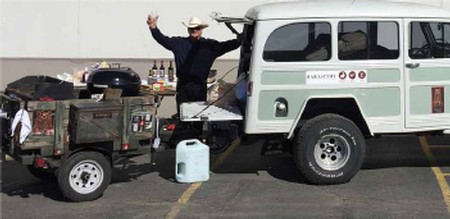
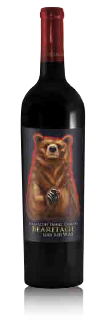
Compared to those who use airplanes and rental cars to sell their wines, this may sound like a tough journey. Yet, as he is quick to point out, it’s actually a piece of cake compared to the pilgrimage made by his great-great-grandfather, Agoston Haraszthy. A Hungarian immigrant who arrived in America in the 1840s, Agoston packed his large family into a wagon and headed to California on the Santa Fe Trail via the treacherous Donner Pass. “He came west in one type of wagon, and I’m heading east in a different type of wagon,” says Haraszthy. In fact, it’s Agoston’s story that Val Haraszthy is traversing the country to tell. Agoston (in addition to becoming the first sheriff of San Diego) founded California’s first commercial winery—Buena Vista, which still operates in Sonoma. The reason he is called the “Father of the California Wine Industry,” however, is because he introduced European grape varieties (vitis vinifera) to replace the humble Mission grape that had been used for California’s wine production. Accepting a commission from the governor, Haraszthy went to Europe and collected thousands of vine cuttings and planted them in California, kickstarting the wine industry as we know it. But wait—the story of Haraszthy’s inherited legacy gets even better: Agoston became friends with General Mariano Vallejo, the last of Mexican governors of Northern California and the founder of Sonoma in 1834 (and a winemaker himself). Vallejo was captured in 1946 by Sonoma settlers who wanted the territory for themselves. (“A high energy group of local settlers who lowered the Mexican flag and hoisted a badly-drawn bear flag and declared the Republic of California—the state’s flag to this day,” explains Haraszthy). Vallejo was lucky to survive, and two of his daughters later married two of Agoston Haraszthy’s sons, creating a multi-family wine dynasty.
A Zinfandel Specialist Comes Full Circle
A fifth-generation Sonoma native, Val Haraszthy took a job in 1972 as a cellar rat at Buena Vista, the very estate founded by his great-great-grandfather. After years honing his skills, he founded Haraszthy Family Cellars in 2006, dedicated primarily to the production of California’s signature grape, Zinfandel. “Zinfandel is so expressive of the place where it grows—it changes so much from one place to another,” says Haraszthy on why he loves the variety. He makes wine from the three most important California regions for Zinfandel: Sonoma Valley, Lodi and Amador County. “Each has a different spice rack flavor profile driven by clonal selection and the site itself—the soil, the sun, the wind and dirt,” he notes.

Haraszthy's Journey. When Haraszthy wraps up the final leg of his American tour—finishing in New York and then taking a month to drive back to California via Texas and Oklahoma—he will have covered more than 12,000 miles. Tour 1 (April): Oakland, CA to Denver, CO. Tour 2 (May): Denver, CO to Little Rock, AR. Tour 3 (June/July) Little Rock, AR to New York, NY. Tour 4 (Sept/Oct) New York, NY to Oakland, CA
But wine is about more than simply what’s in the bottle; it’s the individuals, the stories, the connections. “This is a people-driven business,” says Haraszthy. “When I was developing this company, I would stop by stores and restaurants and really try to make a connection with the people selling my wine. But I have 40 distributors nationally and haven’t met 90% of them. I wanted to find a way to broaden my reach in a really authentic way that would make an impact—without rental cars and business suits. So, I got the Willys Jeep and a BBQ wagon.” Haraszthy isn’t attempting rarified gourmet cuisine (although his BBQ spice rub is a highly coveted secret recipe). “I grill some pork loins, cook some beans and slaw and we sit outside and get to know one another, and I tell them the story of my family. It’s very simple, but it resonates in a memorable way and the reaction has been incredible.” His inspiration was one part “the Oscar Mayer Wienermobile of my childhood” and one part “Wishbone, the cantankerous old cook on the [1960s] television show Rawhide. He would cook hearty trail food and always had your back when any trouble came along. I named my trailer after him.” When Haraszthy wraps up the final leg of his American tour—finishing in New York and then taking a month to drive back to California via Michigan, Texas and the Southwest—he will have covered more than 12,000 miles. It’s not too early to call the tour a success: Haraszthy has tripled sales in many markets (“We’re at 25,000 cases this year but are confident that we will be a 100,000 case brand in a few years,” he predicts.) Some things are just better the oldfashioned way, says Fred Franzia, CEO of Bronco Wine Company, the exclusive national distributor for Haraszthy Family Cellars: “When I was younger, we would sit in meetings with Ernest Gallo or Robert Mondavi or Louis Martini. Now you go to those same meetings and everyone’s a lawyer or a public relations guy. Val is a dinosaur—he’s a throwback with a real family and a real history.”
 FROM THE JULY 2016 ISSUE OF BEVERAGE MEDIA
FROM THE JULY 2016 ISSUE OF BEVERAGE MEDIA
Wine of the Month Club | Haraszthy Cellars
(This blog posting originally appeared on wineofthemonthclub.com)
Hey, welcome to the continuing wine makers series here at the Wine of the Month Club. And I’m really excited to have Val, and I even tried it, my name is 12-letter Hazarathy, Haraszthy.
Val: You butchered it.
Paul: I know, again.
Val: Haraszthy.
Paul: Haraszthy. Okay, I have it. Val Haraszthy. We brought some gorgeous zinfandels today, but more interesting than that, is the history of his family and the California wine business. So we’re just going to turn it over to Val ’cause he brought his son. He’s the great, great, great, great, half, half?
Val: He’s 3 greats, I’m only 2.
Paul: Yeah, well you look like a 2-greater, but okay.
Val: Thank you.
Paul: So tell us about you great, great, great grandfather.
Val: Well, my family is Hungarian. Haraszthy is a Hungarian name. And my great, great grandfather, Augustine, was an immigrant, came to America in 1842. And then in the late 1840s, he came to California, chasing gold like everybody else. He came across the Missouri, the Santa Fe trail which ended in San Diego, wasn’t for sure if it’s San Diego.
Paul: Oh really? Well that’s interesting. You didn’t tell me that part of work. He came to California, he came from North. And he wanted to bring wine to California.
Val: When he got to Sonoma, he realized the area was really just splendid viticultural area. And he built a winery there called Buenavista Winery, that was 1857, I think, considered to be the first winery in California.
Paul: I’ve tasted it many times. So 1850, that was a good vintage, you think or?
Val: Well I don’t know. Well there was no vinifera grape really around. I think it was called St. Croix and mission grape was kind of the grape being grown back there.
Paul: Mission was various right back then. So he decided he wanted vitis vinifera, which we’ve talked about on the shelf.
Val: Yes, because being from Europe and familiar with the wine grape which is vitis vinifera means that he convinced the legislature that they should commission him to go to Europe. And he did, for 1 year, Italy, Germany, France, everywhere, Croatia that he knew, went back to Hungary. Austria, he spent a year there with his son Arpad.
Paul: Arpad, I have an iPod. I’m sorry, Arpad.
Val: And they collected the vine. They collected over a hundred thousand cuttings, and then brought them back to San Francisco and distributed them to you know, [inaudible 2:28] and Charles Krug was a contemporary up there.
Paul: Oh well contemporary, current wine making too, right?
Val: Right, still around. Jim [inaudible 2:38] and Jeff are still at it. So yeah, he brought the vine back and planted it, and distributed it. That’s how the wine grape came to California.
Paul: Came to California.
Val: We’ve been out there ever since, making wine.
Paul: And then he went back to get his $14,000 expenses. Now this is what’s so interesting, he went back to the legislation, what happened?
Val: Well, this is 1861, right in the middle of the Civil War. And California was sitting on a fence about who were they going to side with, the South or the Union? And they asked Augustine who he would side you know, where his persuasions were. He was going with the South and they said, ‘Nope, nope, that;s not going to work.’ And then they basically just refused to pay him for his debt, and it was $14,000 that he spent in 1861.
Paul: That’s amazing. What an interesting story.
Val: It hurt.
Paul: Yeah, we’re just talking about vitis vinifera on our Facebook page. And the people are unaware what that is. So your great, great, great grandfather was responsible for bringing the wine grape, the wine stalk, to California, which is an amazing story.
Val: He’s usually referred to you know, with Augustine, there’s a lot of legend and story. Some of it is definitely fact. Yes, he did make this legendary epic trip to Europe in 1861 and brought all the grape back. And for this history, he is referred to as the Father of California Viticulture. That’s what’s his title.
Paul: That’s really exciting. Well that makes you the great, great Grandfather of Viticulture. No, I mean the great, great grandson.
Val: Yes, that’s right. The great, great grandson of the Father.
Paul: That’s pretty good, pretty good monarchy there. Alright, let’s taste the wines that you brought, ’cause these are really gorgeous.
Val: We specialize in zinfandel. We really hang our hat exclusively on zinfandel. And our belief is that zinfandel is a grape that exhibits distinct flavor and aroma, sensory evaluation type of flavors by virtue of where the grape is grown. So this one here is our Lodi Zinfandel.
Paul: It is packed in the nose with tons of flavors and fruit. And I like the spiciness from the Lodi area.
Val: I’ll tell you what we did. We tend not to blend. But you know, zinfandel has a couple of grapes that just merry very well into, I think first and foremost is probably Petite Sirah, secondly is Sirah. And you know, zinfandel can be a very tart wine, I think by nature, and it needs to kind of be brought into harmony. And with this wine, an 8% addition of, we actually had Napa Valley Sirah to this, which I think brought up the generosity of the wine if you made it a little bit of a noble brought or more dimensional wine.
Paul: So good! Really? That’s interesting. Tons of flavors, lots of berries, you don’t get that, you know. Sometimes Lodi Zinfandel [inaudible 5:33] almost too hot. Sort of hanging around the grape vine too long and gets a little overdone. This is really well balanced, excellent.
Val: Well you know, back in the day, over the top used to be considered sort of a compliment for a wine. I never bought that. Over the top means, it’s too much. And zinfandel you know, because of it’s uneven ripening, it’s a very difficult grape to get to full physiological ripeness. Even there, there’s always a few little green berries, within a cluster.
Paul: It’s just within the clusters.
Val: And that can throw a tart factor into the wine, which is why we manipulated this wine by adding that Sirah.
Paul: This is gorgeous. This is a zin again, but this is a Sonoma County one, it is distinctly different.
Val: Absolutely. There you go. You know, our statement that zinfandel exhibits these different flavor profiles by virtue of its appellation. It can’t be a cheap trick. People get this, and they get it when they taste through our wines. This is our Sonoma.
Paul: And this has changed since I opened it. [inaudible 6:48] You’re pretty lean with your job.
Val: I’ll tell you what we do. What we really love to do is to carry our wines around for 2 days. Tomorrow this wine, when you get some air on it, and the wine just opens up, it softens out. It’s just a more beautiful expression of the fruit.
Paul: Wow. This is really layered, lots of chocolate. I got a lot of things going on.
Val: You know, this is Dry Creek, this zinfandel. It doesn’t say Dry Creek on the label, but the predominant grape sourcing of this is the Saini Ranch in Dry Creek.
Paul: Gorgeous.
Val: And this is a 100% zinfandel.
Paul: Really? That’s amazing how much it’s changed just in the few moments that we’ve been together here. And the last, but not least is your Amador County. It is of course one of the great homes of zinfandel.
Val: Well Amador County you know is the oldest vineyard area in all of California. Jose Maria Amador. You know what Amador means? The loved one, the one who loves. And he was a Spaniard rancher who brought the vine with him in the early 1800s, and began to plant up there. And the oldest vineyard in all of California is called the Le Pierre Vineyard, and it’s in Amador County. Old head trained vines, nothing unwired, just the stalk coming out. But Amador is an appellation that delivers on rather intense fruitiness. The wines are just juicy.
Paul: Let’s say lots of fruit.
Val: If you like the big, juicy, fruit-forward cherry, type of flavor profiles in wine, you’re going to like Amador.
Paul: All of these wines, seem to me completely represent where they’re from, which is a great testimony to the great [inaudible 8:49].
Val: Thank you. We’re doing our job right if you say that.
Paul: You’re welcome, but it is what it is.
Val: That’s what we try to do. That’s what we strive for.
Paul: Because we tasted some of your wines and they’re just kind of ‘What?’ and that’s what happens when… The nose and the berries and the fruitiness, it’s just amazing.
Val: Ooh this is tasting pretty good today.
Paul: Well, that was really, really fun to taste through your wines. And we’ve had some before I think you got a product line that we’ve tasted but I’m not [inaudible 9:08] chance to taste this, I don’t think David. No, I’m kidding, He’s brought him for you. It’s a pleasure having you.
Val: Thank you, Paul. Pleasure being here. Appreciate it.
Paul: Cheers.
Val's Tour - Willy's Wagon and BBQ
Vallejo "Val" Haraszthy
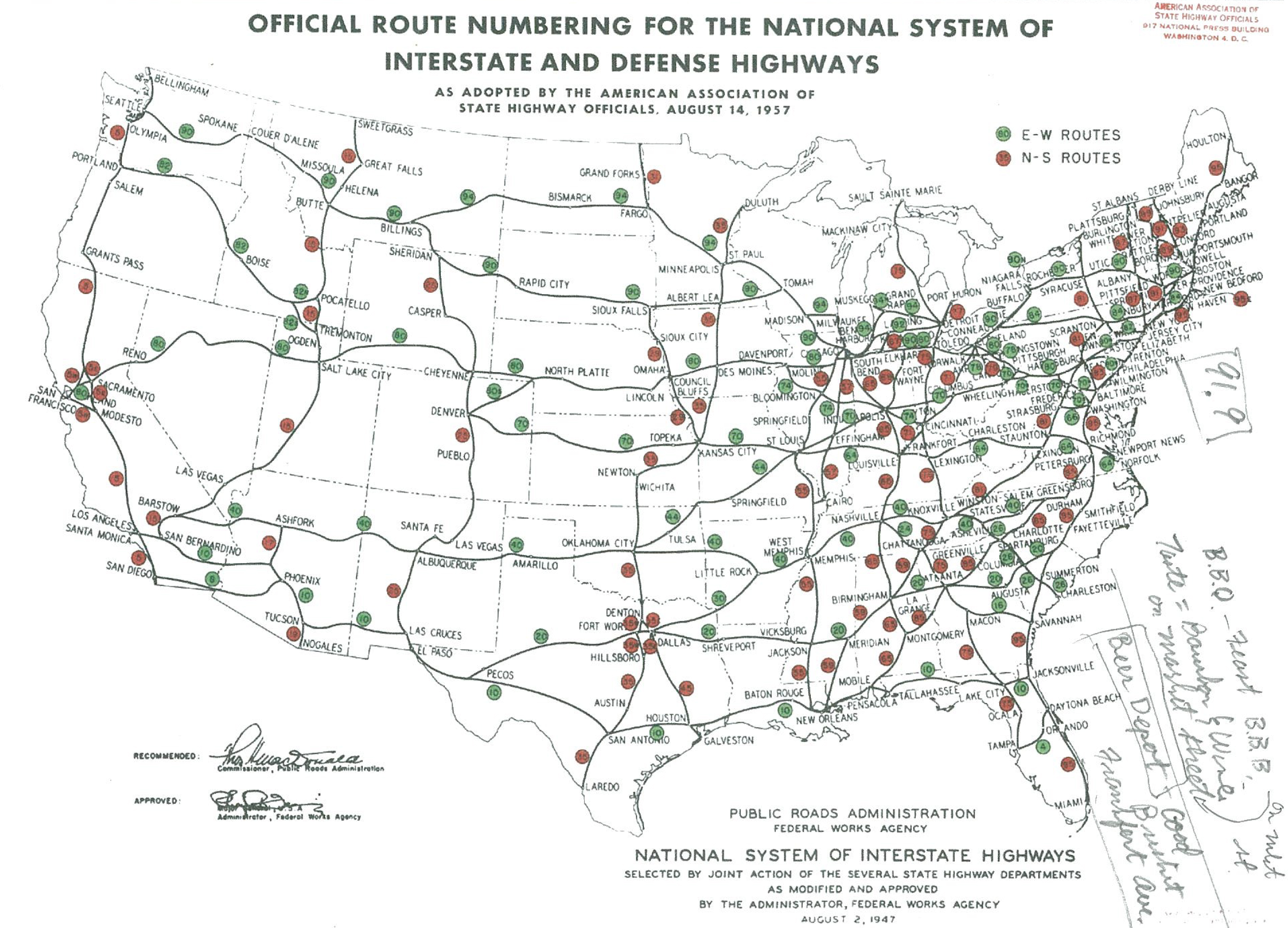
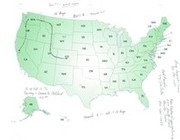
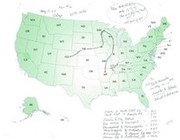
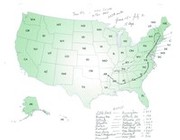
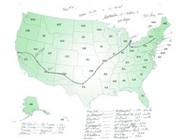
Making the Connection – Pioneer Partnering with Wine Distributors – Haraszthy Family Cellars, Willy’s Wagon and BBQ
After 9 years in business together, Vallejo (Val) Haraszthy and Bronco Wine Company’s Franzia family are planning for a breakout sales year in 2016 with Haraszthy Family Cellars. Both parties share the idea that hitting aggressive sales goals requires an equally hard-working effective plan driving it forward - a plan with clear concise achievable aims. This year their plan is definitely different. By normal standards, perhaps even a little bit crazy. And that is precisely why it should work so well.
“Our ultimate Haraszthy Family Cellars target sales goal is 100,000 cases per year. Val’s brand is strongly positioned to get there and is headed straight for it,” says Bronco Wine Company’s CEO, Fred T. Franzia. He adds, “It’s just a matter of time and Val’s direct sales involvement this year will narrow that time down.” Bronco Wine Company represents Haraszthy Family Cellars wines nationally in over 40 states.
Mr. Franzia continues. “Their family wine history is legendary – Val’s renowned ancestors, General Mariano Vallejo and Agoston Haraszthy contribution to the founding of the California wine business are very well respected in our industry. Val is a good 5th generation California winemaker but he’s an even better ambassador for California wines and his brand. He teams up well with his distributors and the trade. He really enjoys making his wines but I think he loves selling them more.” The Haraszthy brand was up 64% last year and is growing their production to slightly over 25,000 cases in 2016.
Haraszthy’s two new BEARITAGE wines consist of a 2013 Lodi Red Blend – Zinfandel (50%), Syrah (35%), Petite Syrah (15%) and a stainless steel fermented non-oaked 2015 Lodi Sauvignon Blanc (100%). Haraszthy also makes a very popular Lodi Old Vine Zinfandel and Amador County Zinfandel. He will soon be releasing his 2013 Sonoma County Dry Creek Valley Zinfandel and his first reserve Zinfandel – 2013 Sonoma Valley, Indian Spring Ranch Zinfandel. Much admired Sonoma Valley grape grower, 94-year-old George MacLeod farms these ultra high quality Zinfandel grapes. A limited production of 198 cases was produced.
“I want to build personal connections - create a stronger bond and friendship with my distributor partners in the 40 states currently selling my wines,” says owner / winemaker Val Haraszthy. “Most distributor’s upper level managers responsible for executing my sales really don’t know me at all. They don’t know that much about my wines and I don’t know them very well either. It’s almost like were doing well selling wine together by accident. Imagine what could happen if they really got behind us. That’s the change we want to make this year. We’ve got really good wines, an interesting story, and super high value pricing. We need to highlight and underscore this and support each of our distributor’s efforts.”
Val is driving on four separate road tours in 2016 across America in his BEARITAGE 1951 Willy’s Overland Wagon along with his BBQ trailer, Wishbone, in tow. He’ll cover about 12,000 miles.
“It’s pretty basic stuff,” says Haraszthy. “We’re going to enjoy Haraszthy wines with BBQ cooking. Food always brings people closer together. Zinfandel and BBQ is the perfect food and wine pairing. We’re going to get to know our distributors outside the box. And not in their office, but in their parking lot with wine and BBQ tailgate. To me, that is creating the condition, the best environment to discuss how we can grow our sales together. This road trip will be memorable, productive and a lot of fun. Let the other winery guys arrive in rental cars and suits. They can meet their distributors in a partitioned cubicle if they want. Seriously, I’m real fortunate and blessed to be able to do this.”
There is genuine enthusiasm emitting now and Haraszthy seems pumped. “I’m putting a lot more miles on my wagon than Agoston ever put on his,” Val says, smirking. He is referring to his great-great grandfather. Agoston Haraszthy who came to California in 1848 in a covered wagon journey along the Santa Fe Trail ending in San Diego. “Of course, he only had four-ox power and I’ve got much much more! He put his entire family’s life on the line just to get here. The worst thing that can happen to me is I’ll have to call AAA roadside assistance on my cell phone. Agoston headed west and now I’m headed east. Maybe it’s the Hungarian gypsy DNA.” Follow Val’s “Give Them the Willy’s” wine sales road trip. Make a connection with Haraszthy, the Willy’s Wine Wagon and Wishbone on Instagram @ HFCZIN.